The 1990s was a time of enormous change in Ireland. After centuries in the doldrums, an economic boom took off in Ireland as our economy began to change dramatically.
Fuelled by foreign direct investment by some of the world’s largest multinationals, Ireland emerged as one of the world’s fastest-growing economies in the world during the 1990s.

Easyfix mats and cubicles.
The nature of employment also changed with a much greater emphasis on highly skilled roles that had not existed previously.
Even the Irish national football team reached levels that had previously been unimaginable as they qualified for the 1990 and 1994 World Cups.
And just as every other area of Ireland was changing, so too was Irish agriculture.
The inflow of European funding into Irish farming over the 1980s and 1990s via the Common Agricultural Policy (CAP) resulted in significant infrastructure investment on farms up and down the country.
In particular, a building boom took off within Irish agriculture as farmers began to invest in proper housing facilities for livestock for the very first time.
The advent of the slatted shed in Irish farming was a crucial turning point in terms of animal welfare, manure management and grassland farming.
The installation of proper winter housing was particularly important for Irish farmers in the western part of the country, where heavier rainfall typically results in longer periods indoors for livestock.
Innovation
Seeing all these concrete slatted tanks going up on farms all around him, Galway native Michael Earls began thinking about the next logical question – was a cow really designed to be standing on concrete slats for prolonged periods of the year?
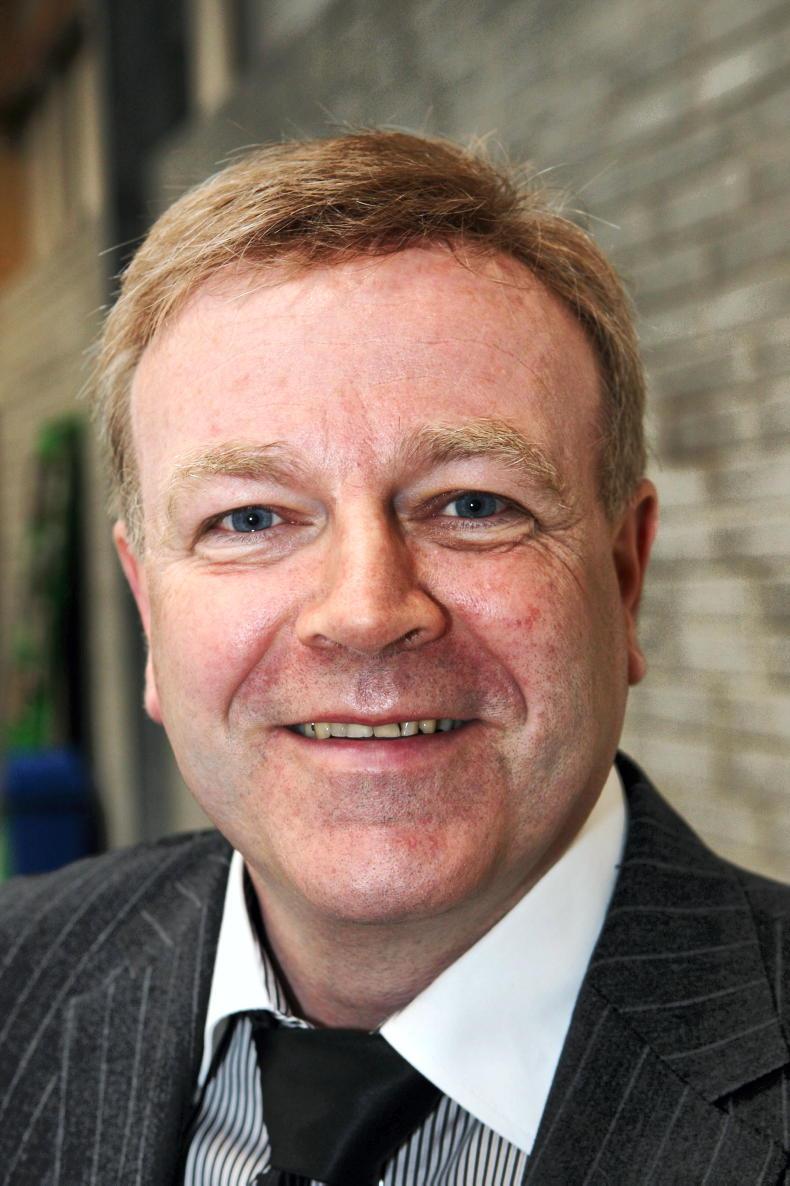
Easyfix founder Michael Earls.
With this question in mind, Earls began experimenting in the mid-nineties with rubber slats on his home farm in Athenry, Co Galway. After much trial and error, he eventually developed the first iteration of what most farmers know today as the Easyfix slat rubber system.
Earls patented his new design and Easyfix was born as a company in 1996.
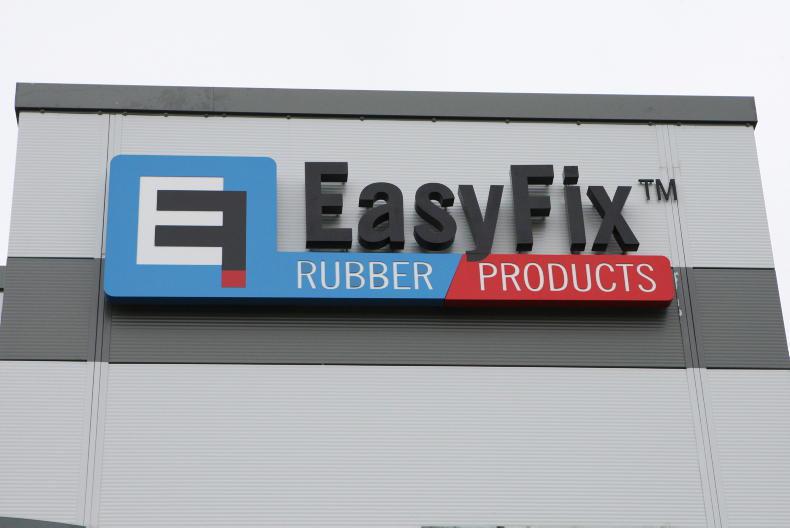
This year, the company celebrates 25 years in business. It has grown from a one-man operation based out of a farmyard to a business that employs almost 50 people and has export sales in over 60 global markets.
Indeed, almost two-thirds of the company’s sales today come from export markets.
Despite its global appeal, the Easyfix slat rubber system wasn’t an easy sell at first, says Niall Earls, sales manager with Easyfix.
“Back in the 1990s, most Irish farmers were just so happy to have a slatted shed for their cattle. The idea of rubber slats was quite a difficult sell at the time. But Irish farmers really care about the welfare of their livestock and we slowly changed their mindsets about rubber slats over the years,” says Earls.
Having steadily built up the business in Ireland, Easyfix got its first opportunity to export in the early 2000s when it won some business in the UK and the Netherlands.
However, it wasn’t until 2008 that the company got its first big break internationally when it was asked to take part in a study on veal production systems by Wageningen University in the Netherlands.
Animal welfare
Anyone who has any experience of agriculture in the Netherlands will know how animal welfare is by far the biggest concern among Dutch consumers.
As such, Easyfix was asked to participate in the Wageningen study to trial its rubber slats from an animal welfare and performance perspective.
“Animal welfare is a huge concern for Dutch consumers, particularly in its veal industry. We agreed to take part in the Wageningen study and our slat rubber system would have got a lot of recognition from the results of that study,” says PJ Burke, sales director with Easyfix.
In the years that followed the release of the Wageningen study, Easyfix began to attract international customers from all over the world, including farming powerhouses such as the US and Germany.
Animal welfare is a huge concern for Dutch consumers, particularly in its veal industry
The company now operates dedicated international sales offices in the UK, Germany and South Dakota in the US.
Easyfix is currently looking at opening a fourth international sales office in Spain.
International sales
Ronan Boyle, who leads a lot of the international sales for Easyfix, attributes the company’s success in global markets to its mindset.
“One of the key things that makes Easyfix a successful company is our approach to business. We really believe in the face-to-face and personal approach to customers. You have to be mobile and you have to get in front of customers,” says Boyle.
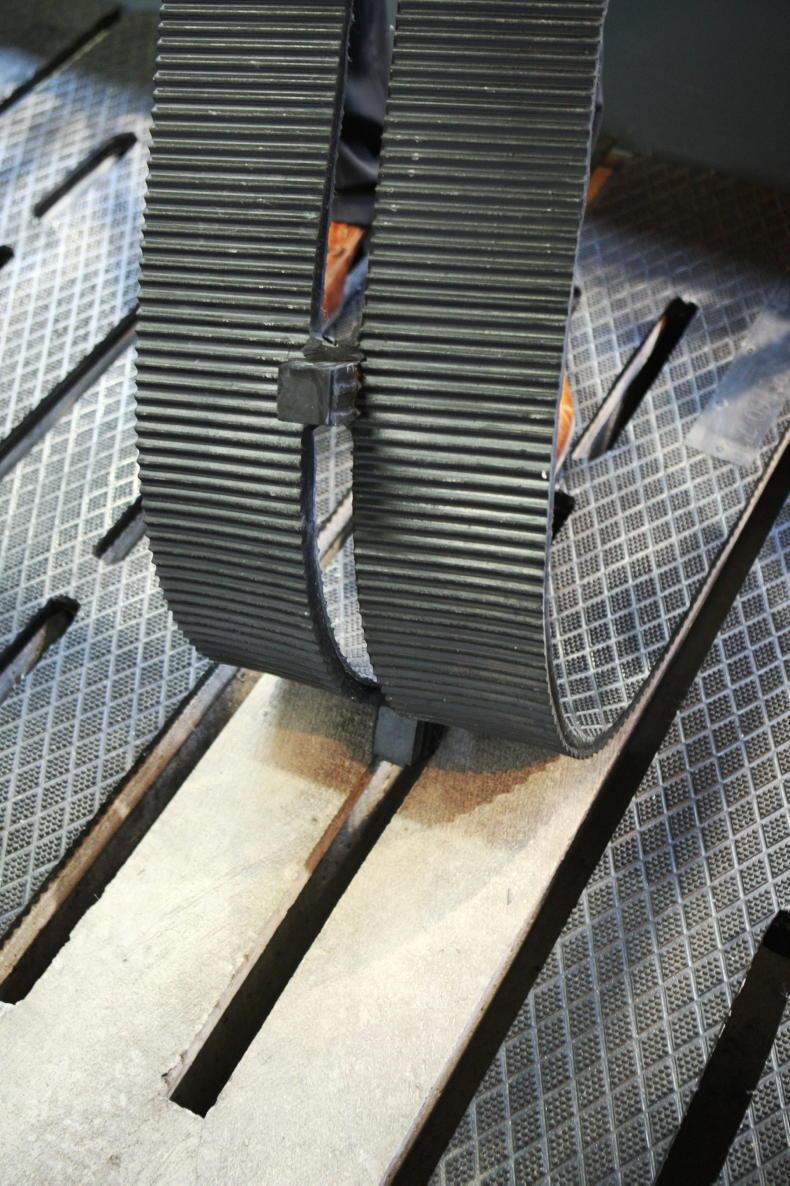
Easyfix silage pit bags and mats.
“A meat processing company from Botswana contacted us a number of years ago saying it needed to upgrade its lairage facility. A week later I was in Botswana meeting the company and we got the contract for supplying the rubber mats. You can accomplish an awful lot by taking that approach with customers,” he adds.
While slat rubber remains the number one product for the company, Easyfix has increasingly innovated over the last decade to develop more and more new products.
The company has a contract to supply rubber fittings to DeLaval, the global milking machine manufacturer, while it has also branched into manufacturing plastic products for the equine industry.
But Easyfix’s core business remains inside the farm shed. As well as manufacturing slatted rubber, the company offers plastic cubicles, feed barriers, cow mattresses and many other plastic-based products.
Sustainability
However, Easyfix is now beginning to look at new opportunities that could take the company in interesting new directions.
Having built a business focused on the environment above the slats in a slatted shed, Easyfix has made a recent acquisition that will allow it to go below the slats for the first time.
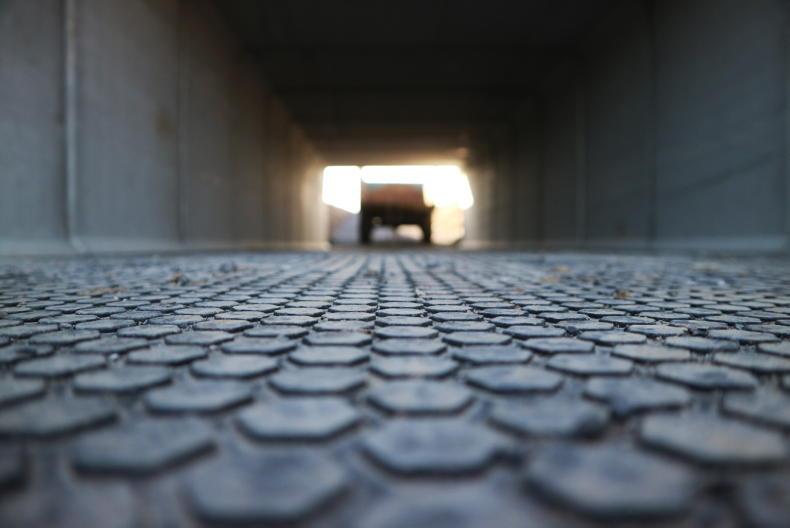
Underpass.
In March of this year, the company announced it had acquired a new slurry management system called “Aeromix”, which can dramatically lower ammonia emissions from stored slurry.
Easyfix said it will rebrand the system as Easyfix Slurry Technology and that it will form a new division within the company.
Having built a successful business on rubber products, this is clearly a new departure for Easyfix which will take it outside its core business.
Yet there is clearly opportunity in this space. The sustainability agenda is only going to intensify in European agriculture and ammonia is one of the most difficult challenges facing farmers in many countries.
In Ireland, almost 100% of ammonia emissions come from agriculture. For the past three years, ammonia emissions in Ireland have consistently exceeded the ceiling of 116 kilotonnes per annum set by the EPA.
The most recent figures published by the EPA show Irish ammonia emissions in 2018 stood at 119.3 kilotonnes.
For the past three years, ammonia emissions in Ireland have consistently exceeded the ceiling of 116 kilotonnes per annum set by the EPA
Reversing this trend of rising ammonia emissions is going to be tricky for Irish farmers, especially since the EU has set an even stricter limit on ammonia levels for Ireland for the coming decade with the ceiling lowered to just 112 kilotonnes.
In 2020, Teagasc published a strategy roadmap for reducing ammonia emissions in Irish agriculture, which outlines 13 different measures that farmers can take to reduce ammonia.
The two standout technologies from this roadmap were protected urea and low-emissions slurry spreading (LESS). Together, these two measures alone would deliver up to 80% of the target outlined in the ammonia marginal abatement cost curve (MACC) at a cost of €5.5m per annum.
They would result in a 10% cut in ammonia emissions from Irish farms and bring ammonia levels down to 107 kilotonnes per annum, which is well below the emissions ceiling set by the EU.
However, both of these measures only deal with ammonia lost in the field. According to the EPA, the storage and housing of livestock manure is the source of almost half (47%) of all ammonia emissions in Ireland.
As such, intervention within the slatted shed or housing unit offers major potential to slash ammonia, which has a very negative impact on air and water quality.
And this is the opportunity that Easyfix is targeting next. The Aeromix system it recently acquired is a technology that is fitted inside a slurry storage tank.
The system injects air into the slurry at intermittent phases, which keeps the slurry agitated at all times and helps greatly reduce ammonia emissions from stored slurry.
Trials conducted by Wageningen show the system reduced ammonia emissions from stored slurry by more than 50% compared to normal slurry storage.
Given the urgent need to reduce emissions of all kinds, a future where it will be mandatory to include a system like this in all new slurry storage units or slatted tanks is foreseeable.
While Irish agriculture faces some daunting challenges over the coming years, most of which relate to sustainability and cutting emissions, farmers should be confident that technologies will emerge to solve these problems.
Ammonia is perhaps the trickiest problem of all to solve but the agriculture industry is developing solutions to the challenge. The new slurry management system from Easyfix is just the latest technology to emerge that has the potential to offer Irish farming a whole suite of options when it comes to reducing its environmental impact.
New technology
Of course, adoption of new technology will be slow unless it is properly incentivised by regulators.
Moving the dial on behavioural change at farm level means the EU and the Department of Agriculture and farm advisers needs to support farmers on making these, often costly, investments on their farms.
Just as the investment in slatted sheds in the 1980s and 1990s yielded major improvements in animal welfare standards, subsidising a new wave of investment in ammonia reducing technology across European farms will yield major benefits for air and water quality.
Rubber-covered slats were slow to catch on with Irish farmers.Solving ammonia problem on Irish farms will be tricky.
The 1990s was a time of enormous change in Ireland. After centuries in the doldrums, an economic boom took off in Ireland as our economy began to change dramatically.
Fuelled by foreign direct investment by some of the world’s largest multinationals, Ireland emerged as one of the world’s fastest-growing economies in the world during the 1990s.

Easyfix mats and cubicles.
The nature of employment also changed with a much greater emphasis on highly skilled roles that had not existed previously.
Even the Irish national football team reached levels that had previously been unimaginable as they qualified for the 1990 and 1994 World Cups.
And just as every other area of Ireland was changing, so too was Irish agriculture.
The inflow of European funding into Irish farming over the 1980s and 1990s via the Common Agricultural Policy (CAP) resulted in significant infrastructure investment on farms up and down the country.
In particular, a building boom took off within Irish agriculture as farmers began to invest in proper housing facilities for livestock for the very first time.
The advent of the slatted shed in Irish farming was a crucial turning point in terms of animal welfare, manure management and grassland farming.
The installation of proper winter housing was particularly important for Irish farmers in the western part of the country, where heavier rainfall typically results in longer periods indoors for livestock.
Innovation
Seeing all these concrete slatted tanks going up on farms all around him, Galway native Michael Earls began thinking about the next logical question – was a cow really designed to be standing on concrete slats for prolonged periods of the year?

Easyfix founder Michael Earls.
With this question in mind, Earls began experimenting in the mid-nineties with rubber slats on his home farm in Athenry, Co Galway. After much trial and error, he eventually developed the first iteration of what most farmers know today as the Easyfix slat rubber system.
Earls patented his new design and Easyfix was born as a company in 1996.

This year, the company celebrates 25 years in business. It has grown from a one-man operation based out of a farmyard to a business that employs almost 50 people and has export sales in over 60 global markets.
Indeed, almost two-thirds of the company’s sales today come from export markets.
Despite its global appeal, the Easyfix slat rubber system wasn’t an easy sell at first, says Niall Earls, sales manager with Easyfix.
“Back in the 1990s, most Irish farmers were just so happy to have a slatted shed for their cattle. The idea of rubber slats was quite a difficult sell at the time. But Irish farmers really care about the welfare of their livestock and we slowly changed their mindsets about rubber slats over the years,” says Earls.
Having steadily built up the business in Ireland, Easyfix got its first opportunity to export in the early 2000s when it won some business in the UK and the Netherlands.
However, it wasn’t until 2008 that the company got its first big break internationally when it was asked to take part in a study on veal production systems by Wageningen University in the Netherlands.
Animal welfare
Anyone who has any experience of agriculture in the Netherlands will know how animal welfare is by far the biggest concern among Dutch consumers.
As such, Easyfix was asked to participate in the Wageningen study to trial its rubber slats from an animal welfare and performance perspective.
“Animal welfare is a huge concern for Dutch consumers, particularly in its veal industry. We agreed to take part in the Wageningen study and our slat rubber system would have got a lot of recognition from the results of that study,” says PJ Burke, sales director with Easyfix.
In the years that followed the release of the Wageningen study, Easyfix began to attract international customers from all over the world, including farming powerhouses such as the US and Germany.
Animal welfare is a huge concern for Dutch consumers, particularly in its veal industry
The company now operates dedicated international sales offices in the UK, Germany and South Dakota in the US.
Easyfix is currently looking at opening a fourth international sales office in Spain.
International sales
Ronan Boyle, who leads a lot of the international sales for Easyfix, attributes the company’s success in global markets to its mindset.
“One of the key things that makes Easyfix a successful company is our approach to business. We really believe in the face-to-face and personal approach to customers. You have to be mobile and you have to get in front of customers,” says Boyle.

Easyfix silage pit bags and mats.
“A meat processing company from Botswana contacted us a number of years ago saying it needed to upgrade its lairage facility. A week later I was in Botswana meeting the company and we got the contract for supplying the rubber mats. You can accomplish an awful lot by taking that approach with customers,” he adds.
While slat rubber remains the number one product for the company, Easyfix has increasingly innovated over the last decade to develop more and more new products.
The company has a contract to supply rubber fittings to DeLaval, the global milking machine manufacturer, while it has also branched into manufacturing plastic products for the equine industry.
But Easyfix’s core business remains inside the farm shed. As well as manufacturing slatted rubber, the company offers plastic cubicles, feed barriers, cow mattresses and many other plastic-based products.
Sustainability
However, Easyfix is now beginning to look at new opportunities that could take the company in interesting new directions.
Having built a business focused on the environment above the slats in a slatted shed, Easyfix has made a recent acquisition that will allow it to go below the slats for the first time.

Underpass.
In March of this year, the company announced it had acquired a new slurry management system called “Aeromix”, which can dramatically lower ammonia emissions from stored slurry.
Easyfix said it will rebrand the system as Easyfix Slurry Technology and that it will form a new division within the company.
Having built a successful business on rubber products, this is clearly a new departure for Easyfix which will take it outside its core business.
Yet there is clearly opportunity in this space. The sustainability agenda is only going to intensify in European agriculture and ammonia is one of the most difficult challenges facing farmers in many countries.
In Ireland, almost 100% of ammonia emissions come from agriculture. For the past three years, ammonia emissions in Ireland have consistently exceeded the ceiling of 116 kilotonnes per annum set by the EPA.
The most recent figures published by the EPA show Irish ammonia emissions in 2018 stood at 119.3 kilotonnes.
For the past three years, ammonia emissions in Ireland have consistently exceeded the ceiling of 116 kilotonnes per annum set by the EPA
Reversing this trend of rising ammonia emissions is going to be tricky for Irish farmers, especially since the EU has set an even stricter limit on ammonia levels for Ireland for the coming decade with the ceiling lowered to just 112 kilotonnes.
In 2020, Teagasc published a strategy roadmap for reducing ammonia emissions in Irish agriculture, which outlines 13 different measures that farmers can take to reduce ammonia.
The two standout technologies from this roadmap were protected urea and low-emissions slurry spreading (LESS). Together, these two measures alone would deliver up to 80% of the target outlined in the ammonia marginal abatement cost curve (MACC) at a cost of €5.5m per annum.
They would result in a 10% cut in ammonia emissions from Irish farms and bring ammonia levels down to 107 kilotonnes per annum, which is well below the emissions ceiling set by the EU.
However, both of these measures only deal with ammonia lost in the field. According to the EPA, the storage and housing of livestock manure is the source of almost half (47%) of all ammonia emissions in Ireland.
As such, intervention within the slatted shed or housing unit offers major potential to slash ammonia, which has a very negative impact on air and water quality.
And this is the opportunity that Easyfix is targeting next. The Aeromix system it recently acquired is a technology that is fitted inside a slurry storage tank.
The system injects air into the slurry at intermittent phases, which keeps the slurry agitated at all times and helps greatly reduce ammonia emissions from stored slurry.
Trials conducted by Wageningen show the system reduced ammonia emissions from stored slurry by more than 50% compared to normal slurry storage.
Given the urgent need to reduce emissions of all kinds, a future where it will be mandatory to include a system like this in all new slurry storage units or slatted tanks is foreseeable.
While Irish agriculture faces some daunting challenges over the coming years, most of which relate to sustainability and cutting emissions, farmers should be confident that technologies will emerge to solve these problems.
Ammonia is perhaps the trickiest problem of all to solve but the agriculture industry is developing solutions to the challenge. The new slurry management system from Easyfix is just the latest technology to emerge that has the potential to offer Irish farming a whole suite of options when it comes to reducing its environmental impact.
New technology
Of course, adoption of new technology will be slow unless it is properly incentivised by regulators.
Moving the dial on behavioural change at farm level means the EU and the Department of Agriculture and farm advisers needs to support farmers on making these, often costly, investments on their farms.
Just as the investment in slatted sheds in the 1980s and 1990s yielded major improvements in animal welfare standards, subsidising a new wave of investment in ammonia reducing technology across European farms will yield major benefits for air and water quality.
Rubber-covered slats were slow to catch on with Irish farmers.Solving ammonia problem on Irish farms will be tricky.















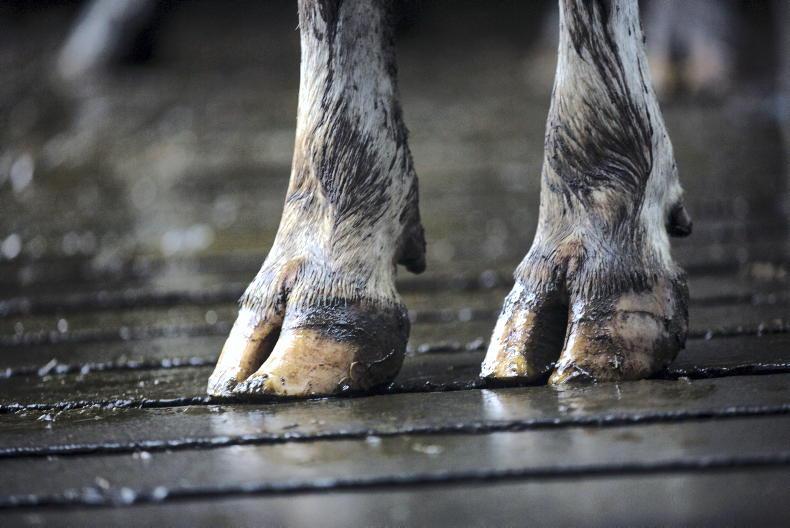

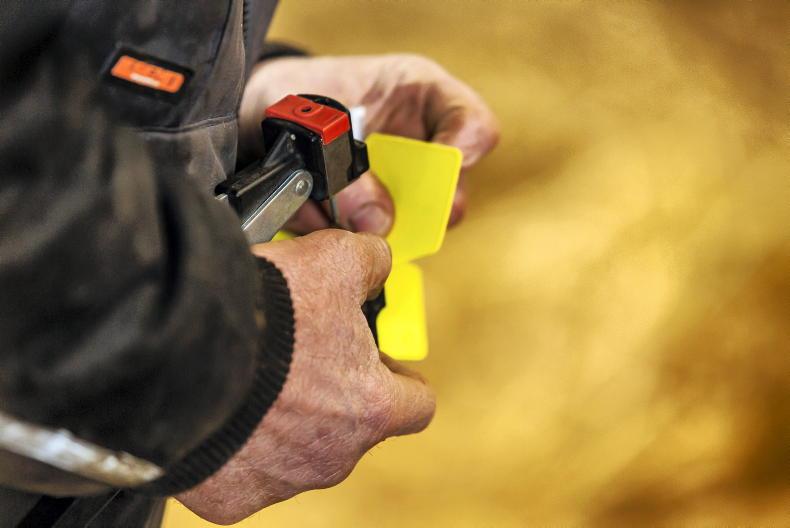


SHARING OPTIONS